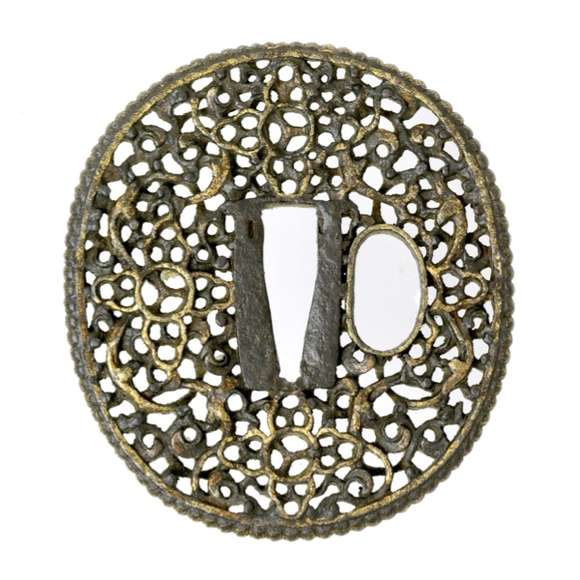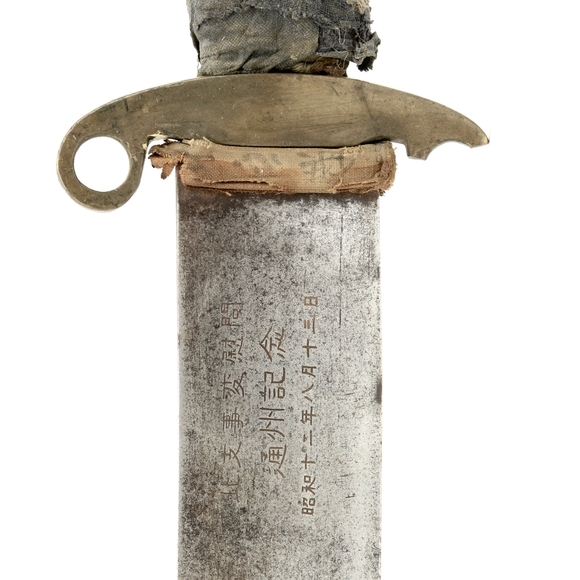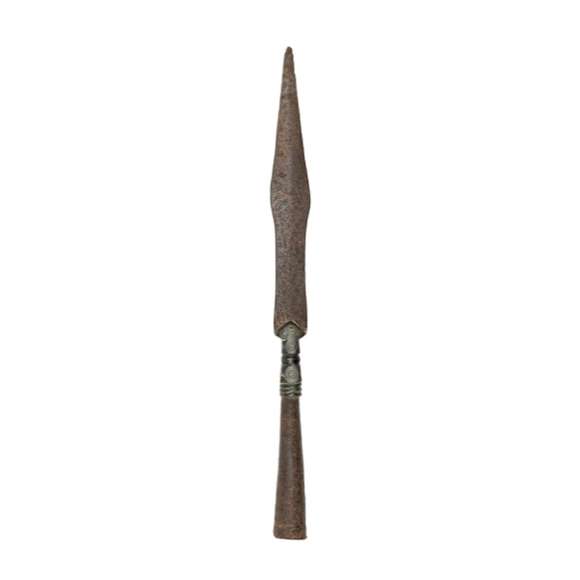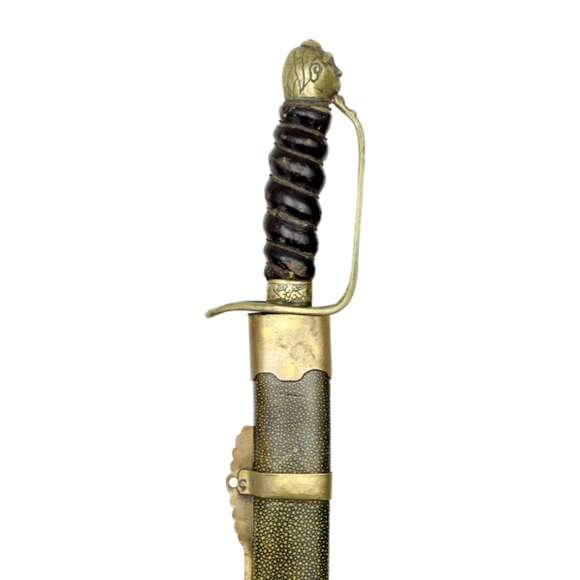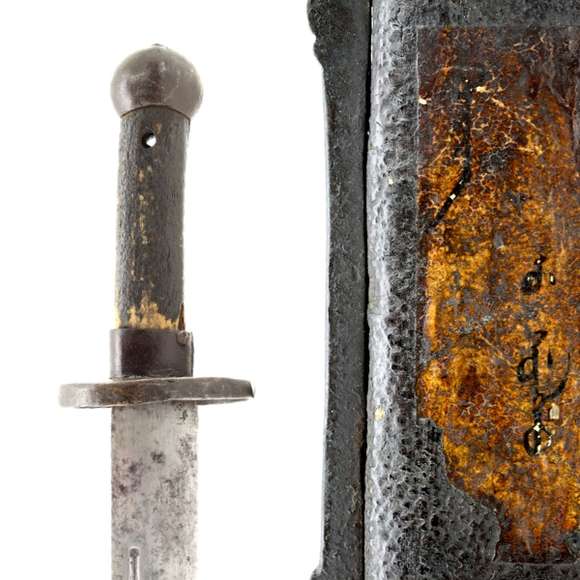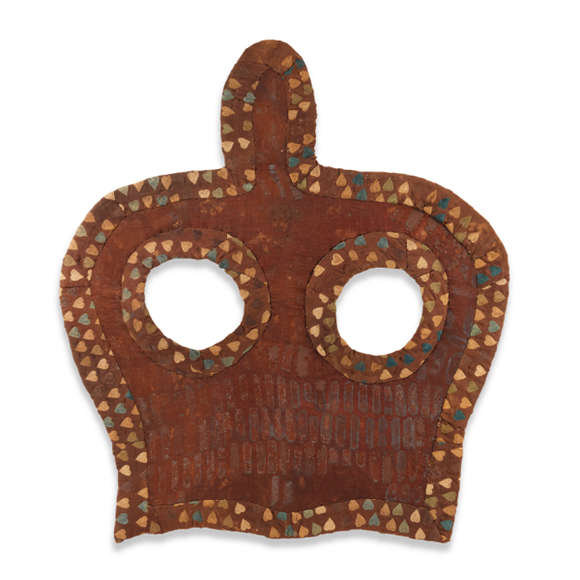A very rare Chinese saber guard dating from the height of the Qing dynasty.

Overall 86.5 cm
Effective length 82 cm
(Inside nock to base head)
9-11 mm
39 by 7 mm
64.3 grams
44 cm from nock
Abelia biflora Turcz. wood, feathers, snake skin, sinew, paper, pigments.
Beijing, China.
1950s
From a German collector.
Probably made by Jù Yuán Hào (聚元號).
Description
A Chinese target arrow of the early Communist Era. The shaft is made of heavy liùdàomù (六道木), scientific name: Abelia biflora Turcz. It's a shrub that grows in northeast China that creates a very dense wood.
The arrowhead is a long and slender four-sided tanged bodkin. It is secured to the shaft with sinew wrapping, covered with a spiral wrap of black and yellow painted paper. The nock is wrapped with green snake skin. It is fletched with brown feathers.
Attribution
One clue to its production is the use of liùdàomù (六道木) that is primarily associated with the work of Jù Yuán Hào (聚元號) of Beijing.
Another clue is the black and yellow spiral wrapping of the foreshaft. Such spiral wraps first appear on Republican Period photographs. German photographer Hedda Morisson documented some bowyers at work in Beijing's bow maker's quarters in 1935 which show arrows just like that.

Photo in the bow making quarters in Dongsi district, Beijing.
From an ablum of photographs by Hedda Morisson.
Harvard-Yenching Library collection.
Another clue as to who manufactured them, and when, is in the use of snake skin for the nock wrapping. The use of this material is not traditional, and only first seen on Chinese bows of Jù Yuán Hào (聚元號) in Beijing, made under its 9th generation bowyer, Yáng Wéntōng (杨文通) in the 1950s.
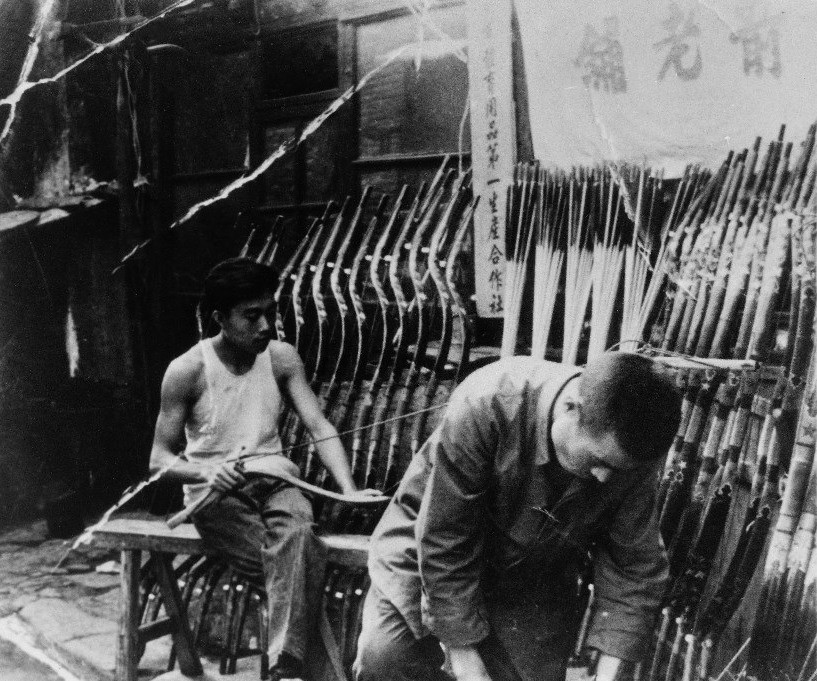
The shop in the 1950s.
Left Yáng Wéntōng, right his father Yáng Ruìlín.
Notice how in the above photos, the nocks are not spiral wrapped anymore like in Hedda's photo of 1935. Also, on the bows on the far right you can now see snake skin is used.

The nock of this arrow compared to a bow made by Yáng Wéntōng behind it.
The bow is listed here on this website.
Conclusion
A heavy Chinese target arrow from the early Communist Era. The use of materials incidates that it was most likely made by Jù Yuán Hào (聚元號) under bow maker Yáng Wéntōng in the 1950s.

With markings attributing it to the Tongzhou incident and a Japanese surrender tag.
Of classic shape, with a leaf-shaped blade on a socket, connected by a cast bronze base.
A standard pattern Qing military saber, but with the rare addition of a label in Manchu.
Silk horse mask from the Xianbei ruled dynasty which ruled northern China from 386 to 534 A.D.

